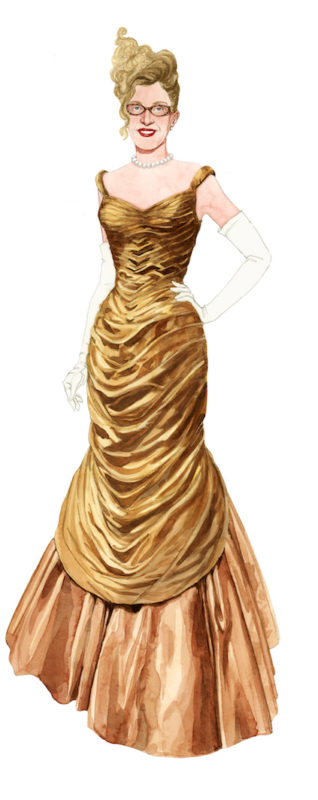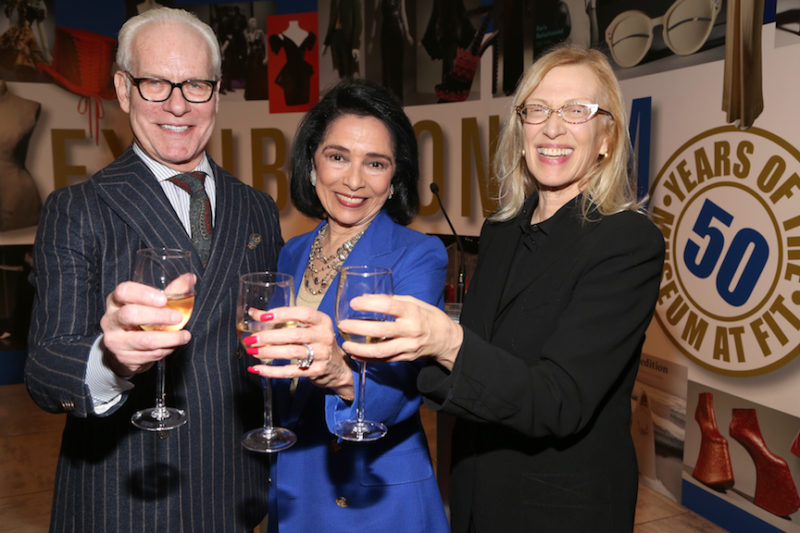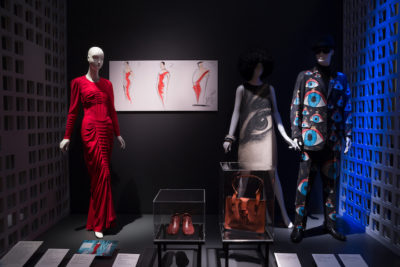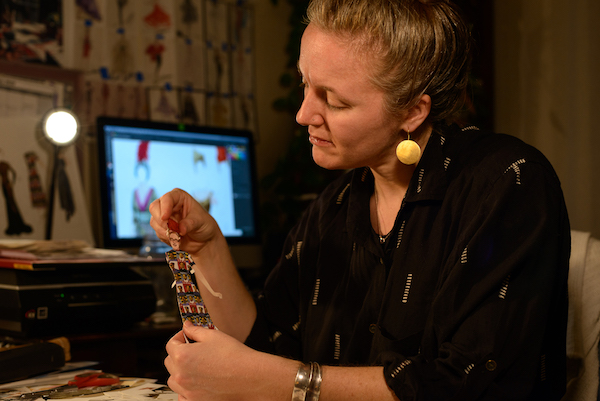
Valerie Steele As Paper Doll (Online and Print)
Online Version: Dress Valerie from the collection by moving the items onto her figure.
Download and Print Version: Dress Valerie Steele by cutting out the pieces and placing them onto her figure as a traditional paper doll.
Clothes are intimate. They’re meant to be on a body, to sheathe that body, to move with that body. And if all goes well, to make that body look fantastic. So it’s a tiny bit sad when a garment is acquired by a museum. Then it becomes a precious object, stripped of its former function. A dress that once walked the runway or sashayed at a downtown club will be kept forever pristine in climate controlled storage, handled delicately by white-gloved conservators, and exhibited only in dim light that won’t damage fabrics or dyes. It’s there to be admired and studied, but never worn.
What if we could somehow reclaim the original purpose of MFIT’s garments? What if someone could put them on? We could think of only one way—and one someone. And so we turned Valerie Steele—director and chief curator of MFIT, Yale PhD, iconic historian of fashion, respected scholar, frequent media commentator, and author of 31 books (some translated into languages including Chinese, French, and Russian)—into a paper doll. Now she can model pieces from the museum’s collection, even if only in two dimensions. “I would never wear a dress from the museum’s collection!” Steele said. “But it’s fun to fantasize about it.”
The garments we chose are all by leading 20th century designers, and were among the pieces featured in the museum’s anniversary show, Exhibitionism: 50 Years of The Museum at FIT, held last spring.

About The Museum at FIT

The Museum at FIT, accredited by the American Alliance of Museums, is one of a select group of specialized fashion museums around the world, including the Musée de la Mode (Paris), the ModeMuseum (Antwerp), and the Museo de la Moda (Santiago). The museum has a collection of more than 50,000 garments and accessories from the 18th century to the present, including avant-garde fashions by leading designers. Its innovative and award-winning exhibitions are both educational and inspiring, attracting more than 100,000 visitors each year. MFIT celebrated its half-century mark in 2019, with Exhibitionism: 50 Years of The Museum at FIT, a show highlighting more than 30 of its most influential exhibitions dating back to the 1970s. Its groundbreaking shows include Fashion and Surrealism (1987), The Corset (2000), A Queer History of Fashion: From the Closet to the Catwalk (2013), and Pink: The History of a Punk, Pretty, Powerful Color (2018). For more on The Museum at FIT, visit fitnyc.edu/museum.
How a Real Person Became a Paper Doll

When Valerie Steele agreed to be turned into a paper doll, we went straight to Anita Rundles, Illustration BFA ’13, an accomplished artist with an uncanny ability to render the drape and texture of fabric. (She created the cover art for our fall 2017 innovation issue, of an 18th century woman in a VR headset, which won a CASE Circle of Excellence Award.) She’s also a fan of paper dolls, and was excited to jump in. She went to the museum’s 50th anniversary show Exhibitionism, to see the outfits up close, and then worked from photos to create the details. Her images are both gorgeous and accurate, representing each garment with remarkable sensitivity.
Of course, the doll had to be just so, and the signature cat’s-eye glasses had to be perfect. We tried several poses, and picked one that showed the garments well—and would be easy to cut out if readers wanted to. We had fun cutting them out ourselves to make sure everything fit and the tabs worked properly.
Once we decided to include Paul Poiret’s harem costume with its feathered headdress, the doll’s hair had to lie close against her head. But that hair looked wrong with some of the garments, so Anita created other hairstyles that Valerie has worn, including her simple, sleek everyday style.
Valerie Steele the human was pleased when she saw Valerie Steele the paper doll’s fabulous wardrobe. We think you will be too.
